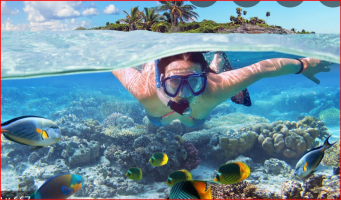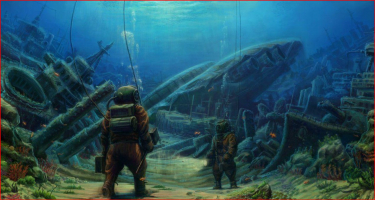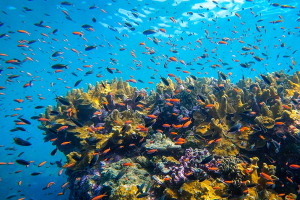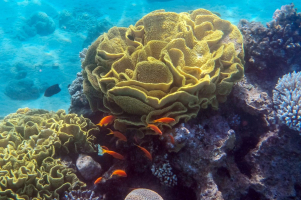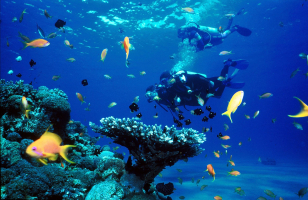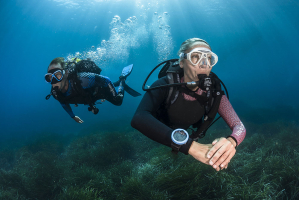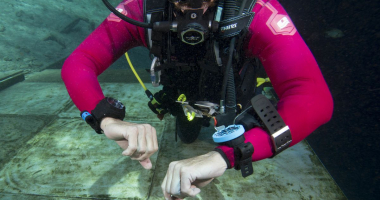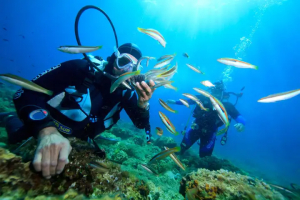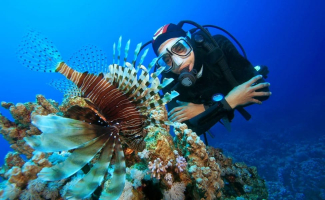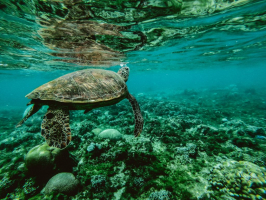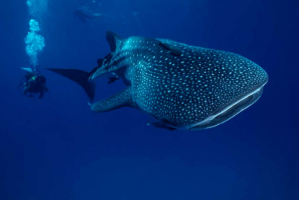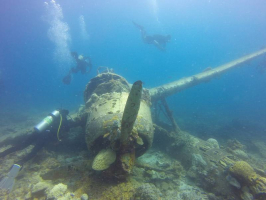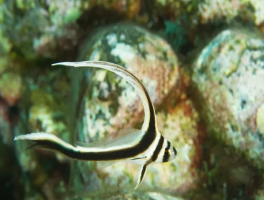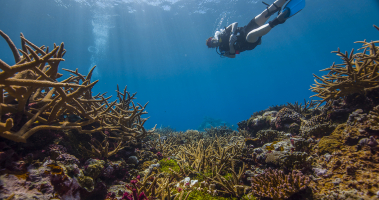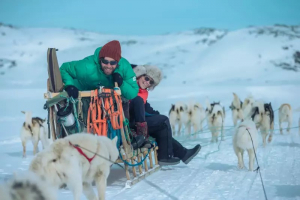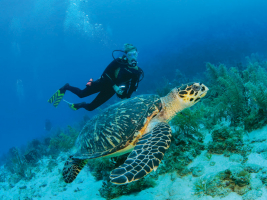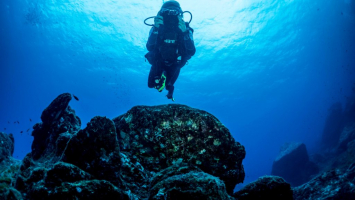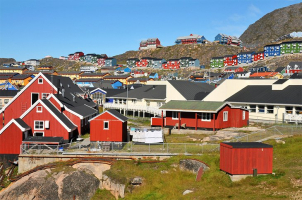Top 10 Diving Spots in Greenland
Greenland, unlike its name, is actually a cold and beautiful place. Greenland's green contrasts with the sky's cold icy blue and the waters, creating ... read more...breathtakingly beautiful landscapes, especially against the backdrop of mountains and geothermal springs. There are tonnes to do in Greenland and while one might think that going scuba diving in Greenland certainly can’t be one of them, but it is actually a popular activity to undertake in Greenland as well as Iceland, with everything from crystal clear lakes to geothermally heated ones offering incredible diving and snorkeling opportunities. Let's take a look at a list of best diving spots in Greenland.
-
The Westfjords, one of the best diving spots in Greenland, is a unique area of Greenland with an incredible diversity of marine life. The area's history includes the great whaling massacre of the mid-nineteenth century, when Norwegian whaling companies made the area their home base for whale hunting and processing. Diving on these historic sites transports you back in time as you float over the bones of gentle giants who are now resting at the bottom of the fjords.
It is also a very remote and sparsely populated region known for its deep fjords and golden beaches. Divers can choose from a wide range of dive sites. Divers will be able to see many old wrecks and artifacts, as well as the abundant marine life, at this fun scuba diving in Greenland location. Dolphins and whales are frequently spotted here during the summer, and it is also Iceland's only offshore location with hard coral.
Location: The Westfjords Region, Westfjords peninsula
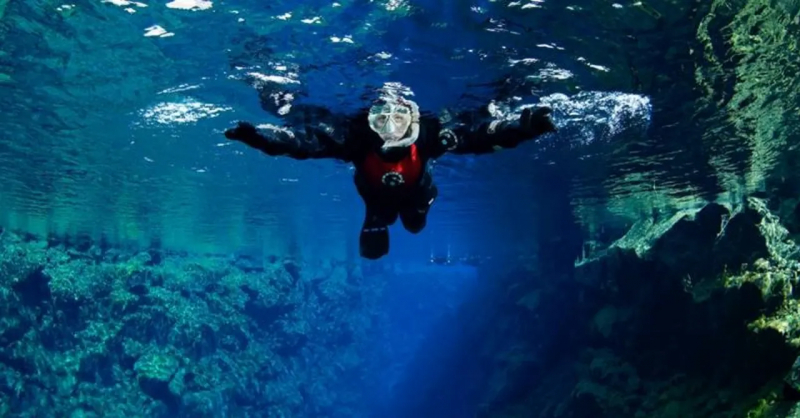
visitreykjanes.is 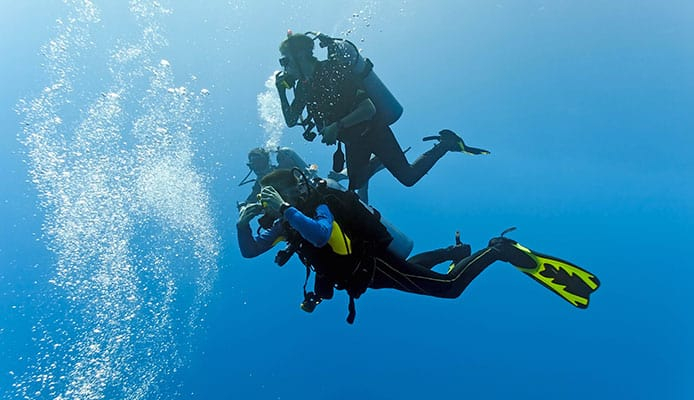
globosurfer.com -
Nesgja is a lovely freshwater fissure filled with clear crystal water. These fissures can be seen all the way from the southwest to the northeast of Iceland and are caused by earthquakes. As a result, over time, some fissures fill up with glacial water that has been filtering through the lava fields for years before flowing directly into rivers, these fissures, or the ocean. The slowly dripping water through the porous lava rock has been perfectly filtered. Despite being shallow (4 meters deep), Nesgja is stunning in its beauty, crystal clear, and offers an underwater view of more than 100 meters.
The underwater landscape is covered in kelp forests and a variety of algae species, which provide both shelter and food for the various marine animals in the area, including flatfish, monkfish, scorpionfish, and others. You might also come across cods, pollocks, and Atlantic Herring. Keep an eye out for humpback whales, minke whales, sperm whales, and orcas that may be passing through the area while diving.
Location: Nesgjá, Greenland, North Iceland
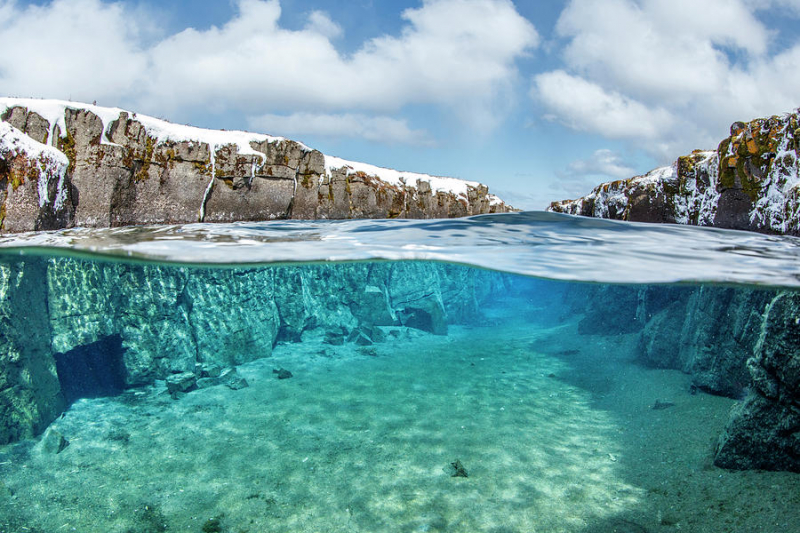
fineartamerica.com 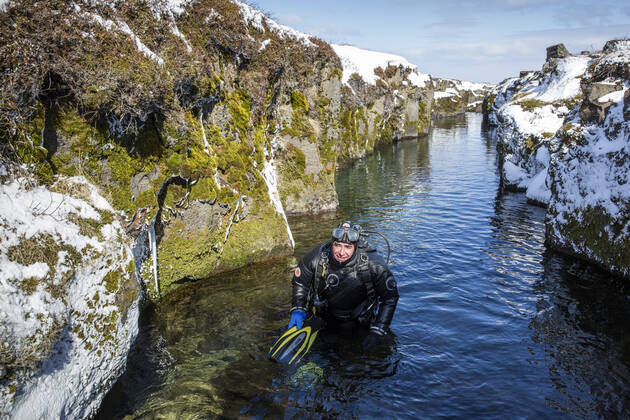
imago-images.com -
Bjarnagjá is an 18-meter-deep lava ravine on the peninsula where tectonic activity caused Iceland to rise out of the sea. The water here is fresh groundwater, but it isn't pure, and the salt from the sea can be found in it because the rift is only a few hundred meters from the coast. This site provides overhead dives for those with the appropriate level of training and diving experience.
Flat fish, eels, and crabs lurk on the seafloor, and beautiful pink anemones have recently sprouted. At 5m on the safety stop, sea fleas or small shrimps can be seen. The water is dark blue and eerie, but it's relatively warm for Greenland. The best time to dive is at any time of year, rain, snow, or shine. The site is completely sealed and weather-protected by volcanic lava rocks, making it ideal for enjoying on windy, stormy days. It's also an excellent location for underwater photography. Because of the dark water and silty bottom, this dive is not recommended for novice drysuit divers in training. Unless you are qualified, do not enter the cavern.
Location: Bjarnagjá, 240 Grindavík
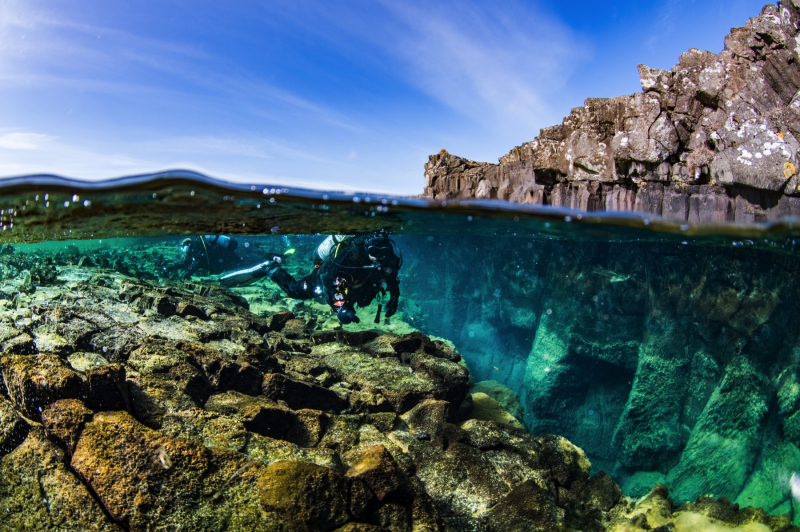
dive.is 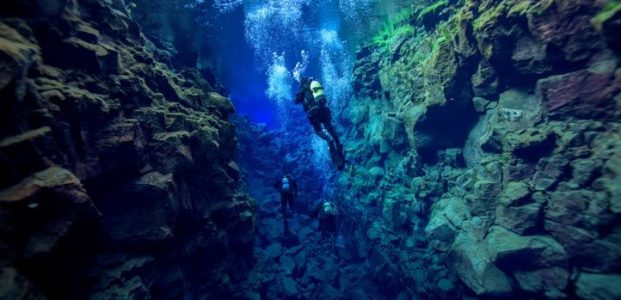
psg.is -
Davidsgja is located near the Eurasian tectonic plate, approximately 7 kilometers on the other side of the continental rift zone. The underwater topography in Davidsgja is breathtaking; it's difficult to comprehend the incredible size, monstrous scale, and origins of the massive round boulders and square slabs stacked on top of each other. This is accentuated by the water's incredible visibility, which makes everything so wonderfully clear. Dwarf char fish, a shy freshwater fish, hide in the lava. Giant trout from deep within the lake will occasionally enter the shallows to explore.
The best times to dive are in the summer when the winds are low and after spring when the lake's winter ice has melted. Diving along, surrounded on both sides by solid volcanic rocks, there's a sense of awe, of geological grandeur, as if you were discovering a new city for the first time. Few dive sites in Greenland have such stunning natural architecture, let alone the space and freedom to explore it.
Location: Thingvellir National Park, 801 Selfoss
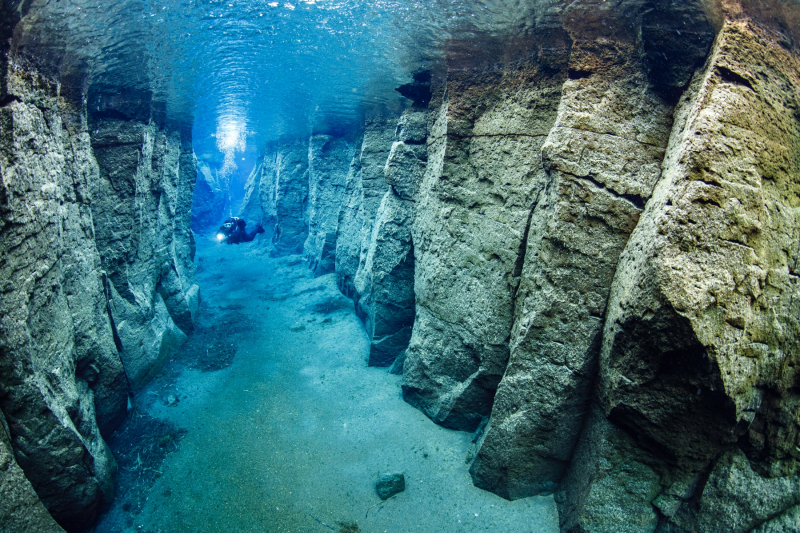
diveexpeditions.is 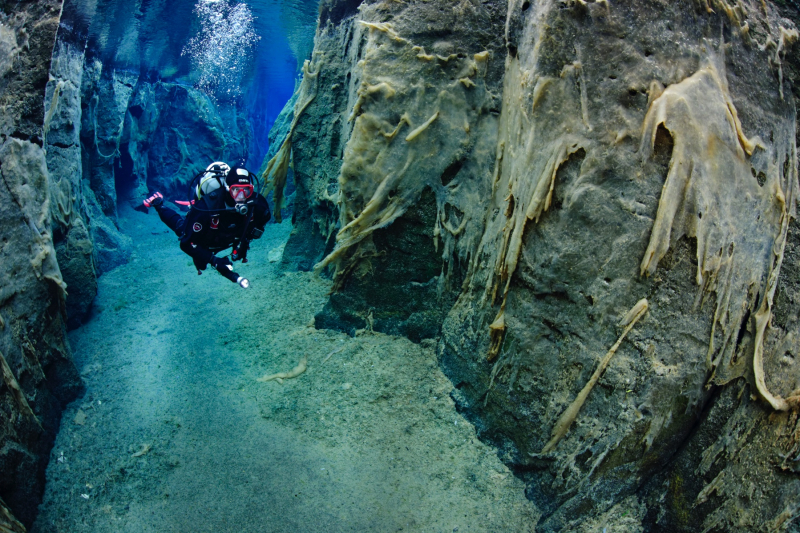
diveexpeditions.is -
Silfra is a fissure between the North American and Eurasian tectonic plates that is located in Thingvellir National Park. The water here is filtered beautifully through porous underground lava for around 30 to 100 years before reaching the large spring which feeds the Silfra. While the water is cold (2°C-4°C), it never freezes because fresh water is constantly poured into the fissure. Silfra is regarded as one of the best diving spots in Greenland due to its constant underground changes, both small and large. This movement results in the formation of new caverns, tunnels, and underwater landscapes, which make for spectacular viewing.
Silfra is said to have the clearest water in the world; feel free to take a sip of this pristine water at any time during your dive or snorkel. Snorkeling and diving in its crystal-clear waters is a thrilling and relaxing experience, and it is now regarded as one of the world's top five dive sites.
Location: National Park Thingvellir, Iceland
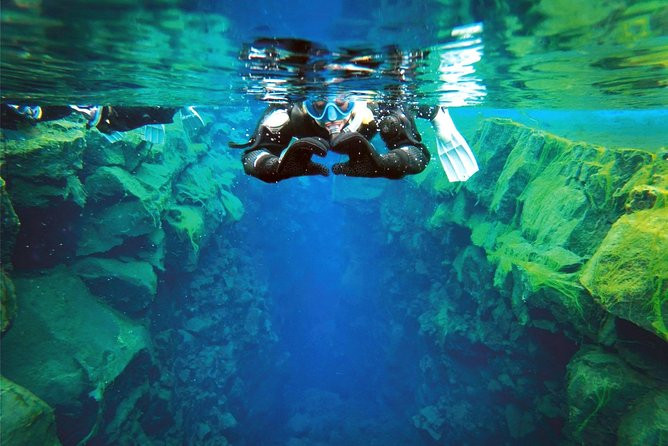
viator.com 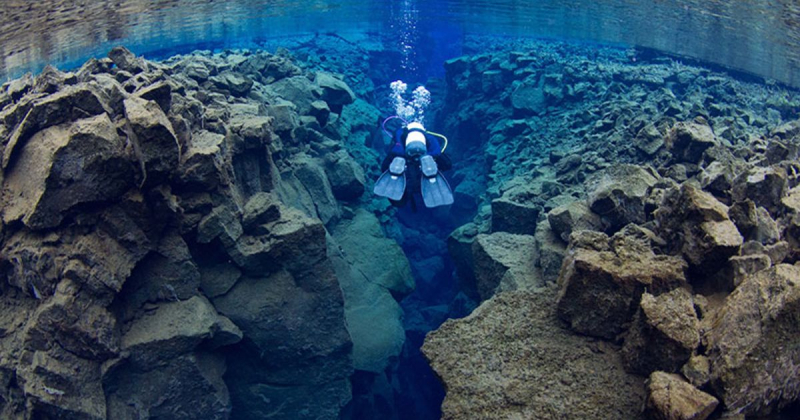
scubadiving.com -
Strytan is a very special diving site in North Iceland, in the middle of Eyjafjörur. Strtan was discovered hundreds of years ago by old fishermen using weights and a line to measure the depth of the fjord, but when modern technology of the coast guard failed to find them, they were removed from sea charts and declared non-existent in 1987. This massive structure was discovered by Erlendur Bogason and his friend rni Halldórsson, captain of the whale watching boat Nels Jónsson, in 1997.
Strytan, located near Akureyri, the country's second-largest city, has a depth of 70 meters. There is also a 55-meter limestone chimney that goes 15 meters beneath the water's surface. Strtan is a protected natural reserve where divers can explore the fauna and flora that have evolved to be truly amazing. They'll also enjoy feeling the warm water that flows from the Strytan. This is one of the best diving spots in Greenland, but it's only for experienced divers because they need to keep their buoyancy under control and the currents can be strong.
Location: Greenland, Iceland
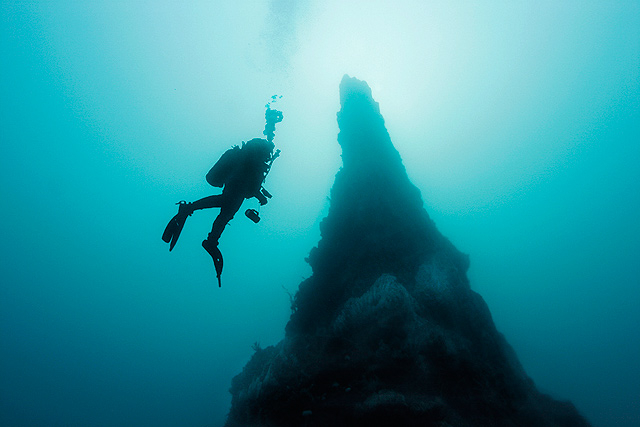
strytan.is 
adventures.com -
Litlaá, which means "Little River" in Icelandic, is a small river near Iceland's northern coast, just south of the arctic circle. Although this is an unusual location for a 17°C river, the geothermal activity keeps it warm. The river's bed is littered with mesmerizing dancing volcanic sands and multicolored sediments that leap from the depths. While you drift along the surface above, heated water erupts from below the riverbed, creating beautiful designs and ripples in the riverbed. The river's floor is made up of amazing dancing volcanic sands, as well as multicolored sediments that spring up from the depths.
Litlaá, which means "Little River" in Icelandic, is a small river near Iceland's northern coast, just south of the arctic circle. Although this is an unusual location for a 17°C river, the geothermal activity keeps it warm. The river's bed is littered with mesmerizing dancing volcanic sands and multicolored sediments that leap from the depths. While you drift along the surface above, heated water erupts from below the riverbed, creating beautiful designs and ripples in the riverbed. The river's floor is made up of amazing dancing volcanic sands, as well as multicolored sediments that spring up from the depths.
Location: Litlaá, Greenland, North Iceland
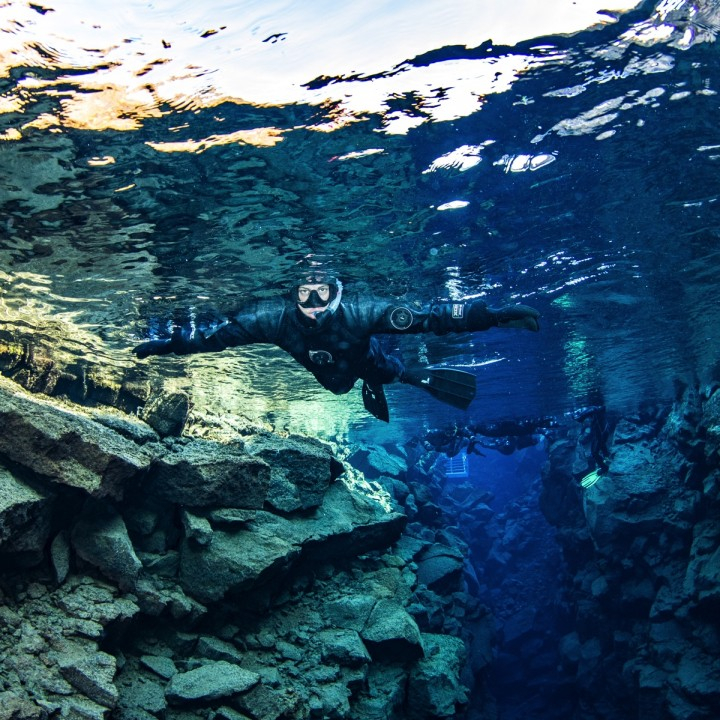
dive.is 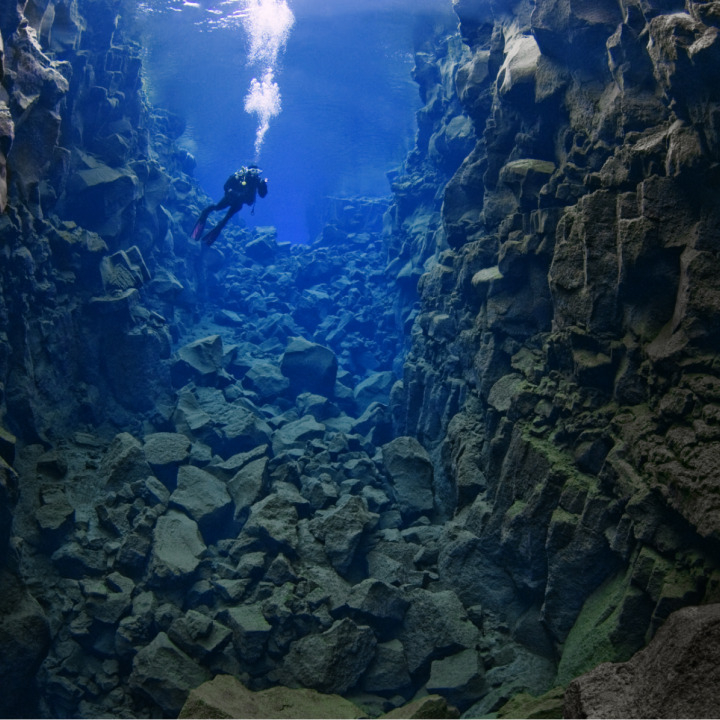
vatnsholt.tourdesk.is -
On the famous 'Golden Circle' route, Gullfoss and Geysir are two of the major sights. Those are Greenland's two most popular diving spots. Gullfoss is a spectacular waterfall about 130 kilometers inland from Reykjavik. In Icelandic, Gullfoss means "Golden Waterfall," and if you visit on a sunny day, you'll see why. When the mist from the powerful falls is caught in the sunlight, it forms a shimmering golden veil that covers the entire area. Gullfoss is also the site of one of the first environmental protests in Iceland to protect this land’s fragile and unique nature.
Geysir is the name of a geothermal area with two active geysers and a number of boiling hot pots. Geysir means geyser in Icelandic, and it is also the name of an older geyser that erupts only infrequently at the moment. Strokkur is the more active geyser, erupting every 4-6 minutes or so. For both Icelanders and visitors, the Geysir area has long been a popular and impressive destination.Location: Geysir, 801 Selfoss
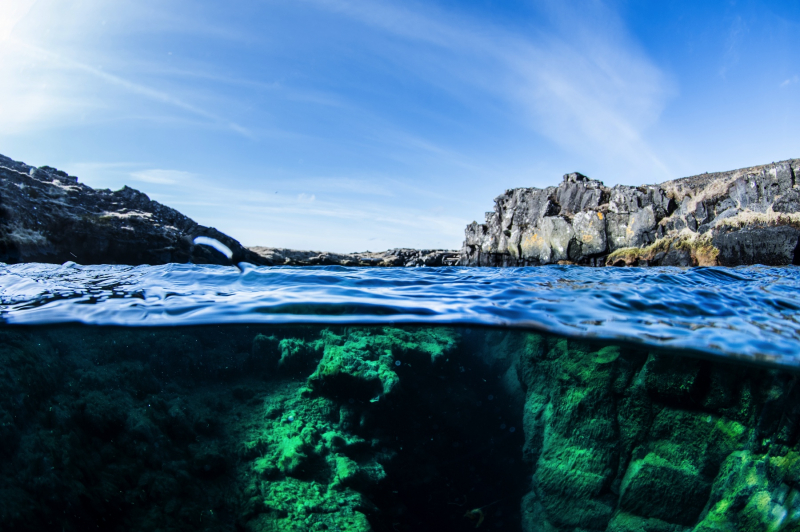
dive.is 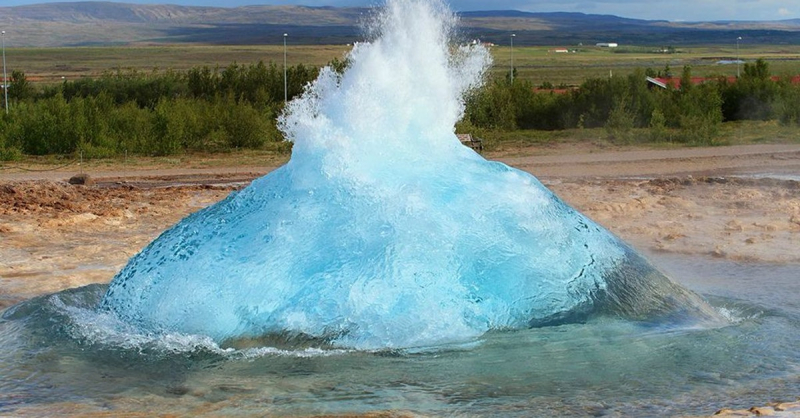
dive.is -
Gardur is about an hour's drive south of Reykjanes, at the tip of the Reykjanes peninsula. You can enter the water either from the beach or by climbing down a pier ladder. Gardur means "garden" in Icelandic, and it does indeed have a verdant garden of over 42 different species of marine algae. The algae are an important part of the Icelandic marine diet and an ancient food source that was consumed by Iceland's first settlers over 1000 years ago. Algae not only provide basic and essential nutrients, but they also have a colorful and varied design.
You can dive through extensive kelp forests in addition to this lovely garden. These forests provide excellent habitat for a variety of fish species. Wolf fish, scorpion fish, various flatfish, monkfish, and other species can be seen. On your dives, you are recommended to try to pay Tommi the Wolffish a visit, fishes live in a hole in the pier.
Location: Garður Pier, 250 Garður
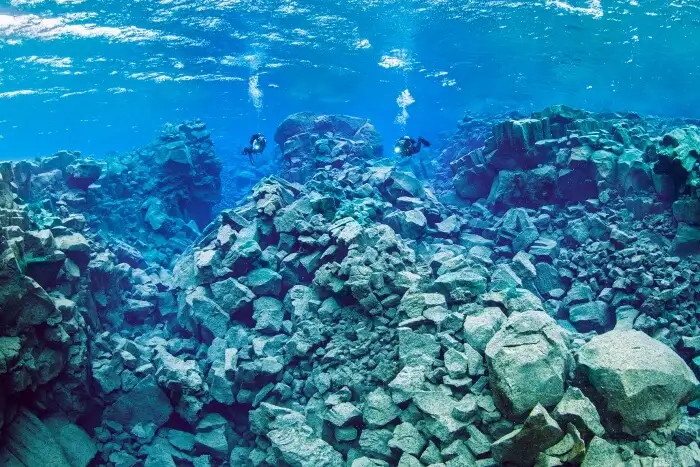
deepblu.com 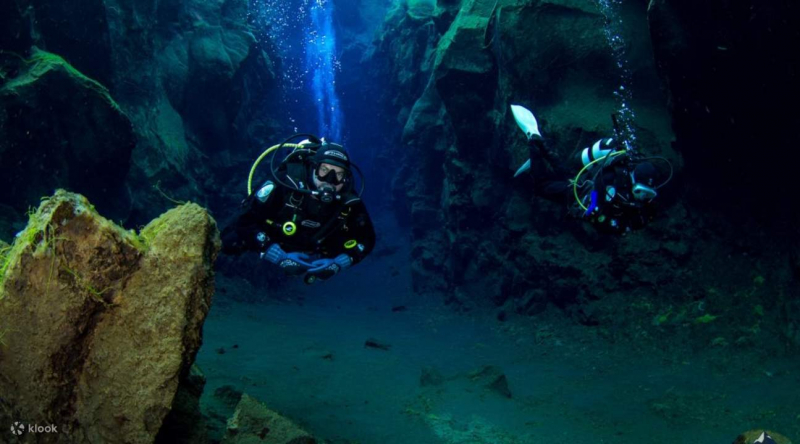
klook.com -
Considered one of the best diving spots in Greeland, Kleifarvatn is the largest lake on the Reykjanes peninsula, covering an area of eight square meters. It is about 30 kilometers outside of Reykjavik and has a maximum underwater depth of 90 meters. Kleifarvatn Lake is surrounded by a stunning volcanic landscape of steep, vibrantly colored hills and strange lava formations. It's hard to believe that a populated city is only 30 minutes away from the lake's edge.
On one side of the lake, underwater hot springs were recently discovered about 10 meters from the shore. A large crater in the center of the hot springs spews large amounts of warm water and gases. The pressure created by the air bubbles pushing through the crater on the lake floor causes the surrounding rocks to vibrate slightly. Divers can usually sense these vibrations, which is a unique experience! Because the lake partially freezes over during the winter, diving and fishing activities are suspended.
Location: Kleifarvatn, Reykjanes Peninsula
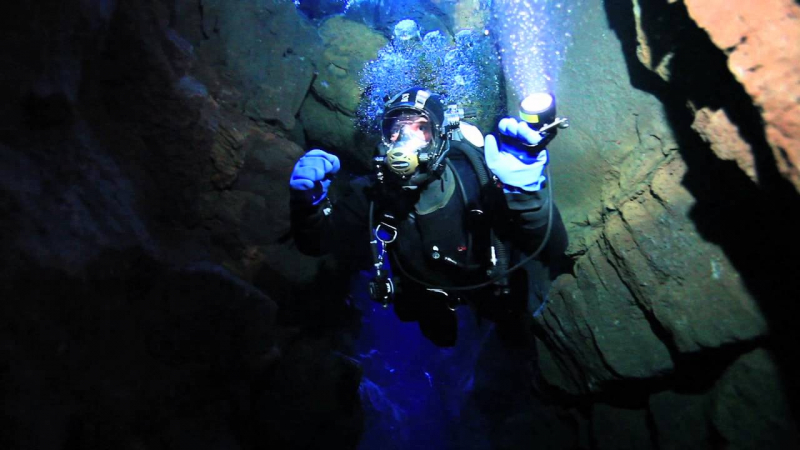
youtube.com 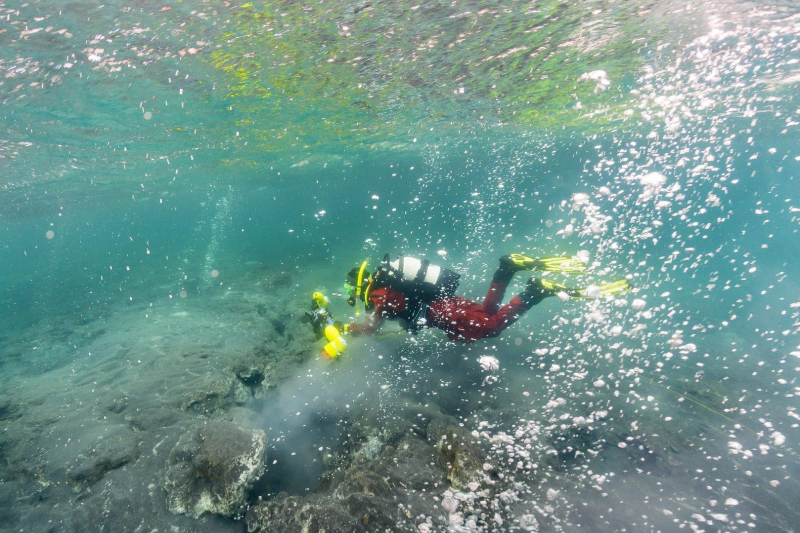
padi.com












